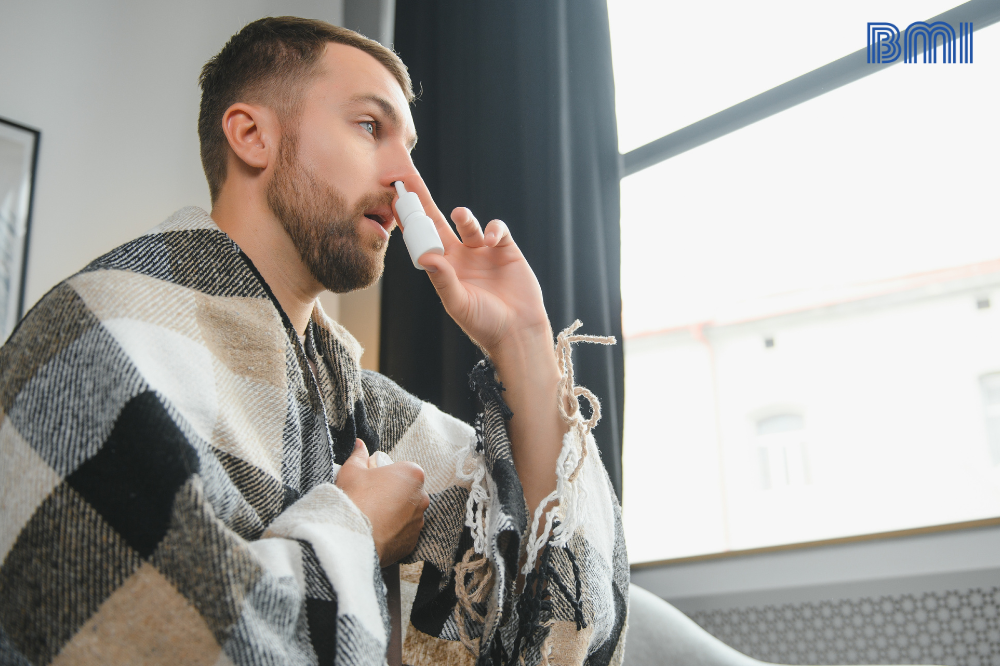Exposure to cold is a trigger for the appearance of certain diseases in susceptible people, and also contributes to aggravate or decompensate other pathologies that they already had previously. Although it may seem strange, its effects begin to be observed at relatively moderate temperatures, between 4 °C and 8 °C, so you have to be alert not only when temperatures are extremely low, but throughout the winter. Contrary to what happens with heat waves, there is not such a clear phenomenon of acclimatization to the cold, and its impact is greater as the winter period progresses.
Extreme cold affects our health mainly in the following ways:
- Causing hypothermia and frostbite, although these effects only represent a small proportion of all winter pathologies in our area. They occur when the mechanisms of conservation and production of heat are not sufficient to compensate for the loss of heat experienced by the significant drop in temperature. Hypothermia is a systemic or general phenomenon, while frostbite is a local manifestation.
- Weaken the immune or defensive response of our body, so that infectious diseases increase, mainly respiratory, viral, such as common colds or caused by the flu virus, or bacterial such as pneumococcal pneumonia. The fact of staying longer in enclosed spaces, with poor ventilation or a large influx of people, also favors the spread of infectious diseases.
- Aggravating chronic respiratory diseases (bronchitis, chronic obstructive pulmonary disease, etc.). Inhalation of very cold air can cause irritation of the respiratory tract, microinflammation and bronchospasm. Bronchoconstriction also favors the entry of infectious agents. On the other hand, in addition to low temperatures, the presence of humidity and the existence of mold in the home can contribute to the presentation of asthmatic symptoms.
- Favoring the appearance of cardiocirculatory episodes or decompensation of pre-existing ones. Cold predisposes to the formation of thrombi in the cerebral and coronary arteries, as well as to an increase in blood pressure, which can lead to stroke and ischemic heart disease.
- Increasing the risk of falls and traffic accidents, with the consequent injuries, due to the formation of sheets of ice or snow.
- It is not uncommon for home fires and episodes of carbon monoxide poisoning to occur in winter due to the use of braziers, stoves, wood-burning fireplaces, etc., either due to their malfunction or because they are used in poorly ventilated places.
To identify a state of HYPOTHERMIA, it must be taken into account that the symptoms usually begin gradually and will vary according to the degree of severity. Non-specific symptoms such as cold skin, tremor, confusion, clumsiness in movements, difficulty speaking, etc. They should make us suspect that the person may present a state of hypothermia. It is very important to note that in infants and young children, the warning signs are cold, bright red skin, accompanied by a lack of energy.
The Freeze
It is an injury to the skin and body tissues due to localized cooling, the severity of which depends on the temperature (always below freezing), the duration of exposure to cold, the intensity, and the extent of the affected surface. It can present mildly or superficially, causing reversible damage, or progress to deep frostbite that even requires amputation of the area. Although it can affect any part of the body surface, even if it is protected by warm clothing, it is more frequent in those exposed or distal, such as the nose, ears, cheeks, and fingers and toes.
What can we do if we find ourselves with a case of possible hypothermia?
Hypothermia is an emergency situation that requires immediate medical assistance. While getting such help we must:
- Take that person to a warm or sheltered room, shelter, or place. If this is not possible, try to isolate it from cold surfaces. Move it carefully avoiding sudden movements and do not massage it. The person with hypothermia should remain at rest.
- Take off her clothes if they are wet. Provide warmth with blankets, towels, or other warm clothing, or through direct body contact. Hot showers and baths can cause hypotension, syncope or cause arrhythmias, so they are not recommended.
- If he is conscious, try to get him to drink hot drinks, but never alcoholic ones.
And before a freeze, what should be done?
Frostbite also requires urgent health care, as it can lead to irreversible sequelae. In any case, the following precautions must be applied:
- Move the person to a warm and sheltered area, removing damp or wet clothing.
- The affected parts can be immersed in warm (not hot) water or put warm cloths or compresses, but do not apply direct heat to the damaged surface. Body heat can also be given, for example, warming the fingers of the hands in the armpits. The injured areas have less sensitivity, therefore, and to avoid burns, electric pads, stoves, radiators, hair dryers... should not be used to heat them. They should not massage the frozen area or open any blisters that may form.
- If the feet are frozen, you must prevent them from walking.
- Administer hot drinks and foods rich in carbohydrates.
But low temperatures do not affect all of us equally; individual factors, adaptation factors, personal and social habits, and certain circumstances associated with the environment are influential.
Population groups that are especially vulnerable or at risk are:
- Homeless people or people with a low socioeconomic level, in a situation of social isolation, exclusion or precariousness, including cases of energy poverty.
- Elderly people. Their adaptation to cold is diminished, their capacity for thermoregulation reduced and their defensive and immune mechanisms weakened.
- Dependent people and people with reduced mobility.
- Newborns, infants and young children. Their response to cold is still not well regulated, they do not know how to express themselves by saying what they feel and they are not capable of developing spontaneous physical activity to warm up.
- Pregnant. They are more susceptible to the effects of extreme cold.
- Malnourished people, with physical exhaustion and those who present an excessive consumption of alcoholic beverages or addictive substances.
- Those who suffer from certain chronic diseases (cardiocirculatory and cerebrovascular conditions, asthma, respiratory failure, diabetes, hypothyroidism, psychiatric disorders, diseases that occur with peripheral vasculopathy or neuropathy, etc.).
- People who require medications such as muscle relaxants, antihypertensives, beta-blockers, neuroleptics...
- Outdoor workers or those who carry out activities that require effort in outdoor environments, as well as those who practice sports in that environment, especially if it is in high country or mountain areas (hiking, mountaineering, mountaineering, skiing, hunting or similar).
- Travelers, tourists or passers-by who come from warmer areas or countries.
In any case, keep these recommendations in mind to protect yourself against episodes of extreme cold:
Take precautions outdoors
- Limit, as far as possible, outdoor activities, especially if you belong to a risk group. Take short outings, avoiding sudden changes in temperature continuously. If you have to do physical work in such conditions, do it with caution, without exhausting yourself.
- Wear warm clothing that protects from moisture and wind. It is preferable to wear several layers of light and loose clothing than a single thicker one. Pay special attention to the head, neck, hands and feet, since most of the body heat is lost from these areas. Remember that wet clothing and sweat cool the body quickly, so try to stay dry. The shivering indicates that we are losing heat excessively and that we must take shelter in a warm and dry place.
- Do not breathe through the mouth, inhale the air through the nose so that it warms up as it passes through the nostrils.
- Use extreme caution to avoid falls when frost or snow has occurred. Wear non-slip footwear.
- On mountain outings, be properly equipped to deal with adverse weather conditions and, where appropriate, bring appropriate equipment for walking on snow or icy terrain.
- If you have to travel by car, check it before leaving, avoid secondary, icy or snowy roads as much as possible, go suitably equipped (flashlight, chains, warm clothes, water, some high-calorie foods, usual medication, mobile phone , etc.) and follow the indications provided by the DGT.
protect yourself at home
- Also shelter inside, with appropriate clothing and according to the temperature of the house
- Pay special attention to the elderly, babies and young children, limiting their stay outside and accommodating them in the warmest rooms of the home. Remember that very young children cannot engage in spontaneous physical activity that warms them up, nor can they clearly show that they are cold.
- Eat hot meals and maintain a varied diet, with a high energy intake, which includes soups, broths and hot or warm drinks throughout the day. Avoid excessive consumption of alcoholic and caffeinated beverages. Do not forget hydrate properly, because in cold times there is also a greater loss of fluids.
- Ensure good thermal insulation of the house. Check the status of enclosures. Seal cracks and holes through which the cold can enter, if necessary use weather stripping or other insulating material on doors and windows
- If you do not have a suitable heating system, do not stand still for too long, move around or do some physical activity to warm up whenever possible.
- Avoid fire hazards and carbon monoxide poisoning. Take special care with gas and wood stoves, as well as network overloads if you use stoves, heaters or electrical appliances to heat the house, and do not leave them on overnight. Check its correct operation.
- Ventilate your home at least twice a day to renew the air. Short periods of five or ten minutes may be sufficient. If you use gas stoves, braziers or fireplaces, ventilate more frequently.
Besides
- Don't forget to keep an eye on elderly relatives, friends or neighbors, especially if they live alone or are vulnerable to the cold.
- If you take medication on a regular basis or suffer from a chronic pathology, ask your doctor what additional measures you should take. Consult the recommended annual immunization guidelines.
- During cold spells, keep abreast of the information provided by the media and social and health services. Follow the advice and preventative measures they recommend.
- In any case, if you suspect that you or someone close to you may have a cold-related symptom or medical problem that you cannot resolve on your own, seek medical attention.















